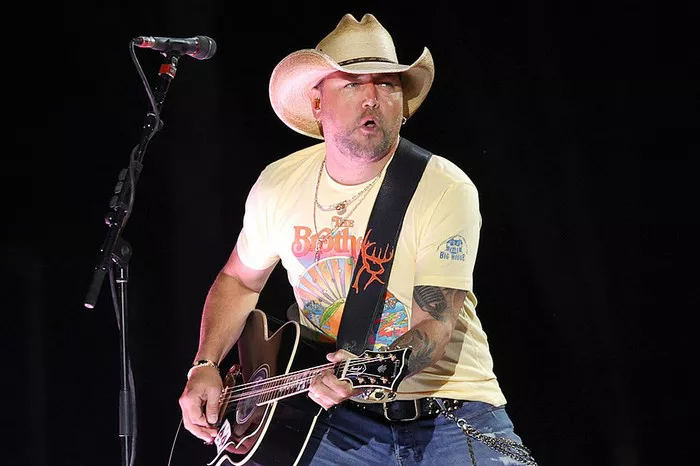In the world of country music, Jason Aldean is undoubtedly a prominent figure, known for his chart-topping hits and high-energy performances. However, his latest music video, ‘Try That in a Small Town,’ has caused a significant stir, resulting in its removal from various platforms. The controversy surrounding the video has ignited heated discussions about artistic expression, social responsibility, and the role of country music in shaping cultural norms. In this article, we will delve into the key points of contention, examining the reasons behind the video’s removal and the broader implications it holds for the industry.
1. The Video’s Plot and Imagery
At the center of the controversy lies the video’s plot and imagery. The video depicts a fictional small town where law enforcement is portrayed as ineffective and corrupt, and vigilante justice prevails. Some critics argue that the video glorifies violence, promoting a dangerous narrative that could influence impressionable viewers. The use of firearms and other weapons in the video further fueled concerns, particularly in light of the ongoing discussions surrounding gun control and violence in the United States.
2. Perceived Insensitivity to Real-Life Events
Another point of contention involves the timing of the video’s release in relation to recent real-life events. Several instances of violent acts and social unrest have shaken the nation, raising questions about the appropriateness of the video’s content at such a sensitive time. Critics argue that the imagery in the video may be interpreted as insensitive and out of touch with the prevailing societal mood.
3. The Impact on Country Music’s Reputation
Country music, like any other genre, has its unique identity and values that fans cherish. However, the controversial ‘Try That in a Small Town’ video has sparked debates about the genre’s direction and whether it still represents the heart and soul of America. Some believe that the video undermines the genre’s reputation and reinforces stereotypes associated with country music. Others argue that artists have the freedom to experiment with different themes and styles, and one controversial video does not define the entire genre.
4. The Role of Artists in Society
One significant debate arising from this controversy is the role of artists in society. Should musicians like Jason Aldean be held accountable for the messages they convey through their art? Some argue that artists have a responsibility to use their platforms responsibly, especially when their works can have a significant impact on their audience. On the other hand, proponents of artistic freedom contend that artists should be allowed to express themselves without fear of censorship or judgment.
5. Public Backlash and Social Media’s Influence
As the video gained traction and the controversy intensified, social media platforms became a battleground for opposing viewpoints. Hashtags calling for the video’s removal or supporting Jason Aldean’s creative expression trended on Twitter and other platforms. Influencers, fans, and critics alike joined the debate, leading to a surge of public pressure that ultimately influenced the video’s removal from major streaming services.
6. The Response from Jason Aldean and His Team
In the face of mounting criticism, Jason Aldean and his team initially defended the video, emphasizing its fictional nature and artistic license. They argued that the video was meant to be a cinematic portrayal of a small town’s struggles, not an endorsement of violence or vigilantism. However, as public backlash intensified, Aldean issued an apology, expressing regret for any unintended offense and asserting that the video’s removal was in response to the concerns raised by his fans.
7. The Ongoing Debate on Artistic Expression
The ‘Try That in a Small Town’ controversy has reignited the age-old debate on artistic expression and its limits. Many artists use their creativity to address societal issues, challenge norms, and provoke thought. However, determining where the line should be drawn between artistic freedom and responsible expression remains a complex and contentious topic.
Conclusion
In conclusion, the removal of Jason Aldean’s ‘Try That in a Small Town’ music video has sparked a whirlwind of debate, raising questions about the responsibility of artists, the influence of social media, and the direction of country music as a genre. While some argue for stricter scrutiny of artists’ works, others advocate for preserving artistic freedom. As we move forward, it is essential for artists, fans, and industry stakeholders to engage in constructive dialogue, recognizing the power and impact of creative expression on our society. Only through open conversations and mutual understanding can we navigate the intricate balance between art, responsibility, and social consciousness.

